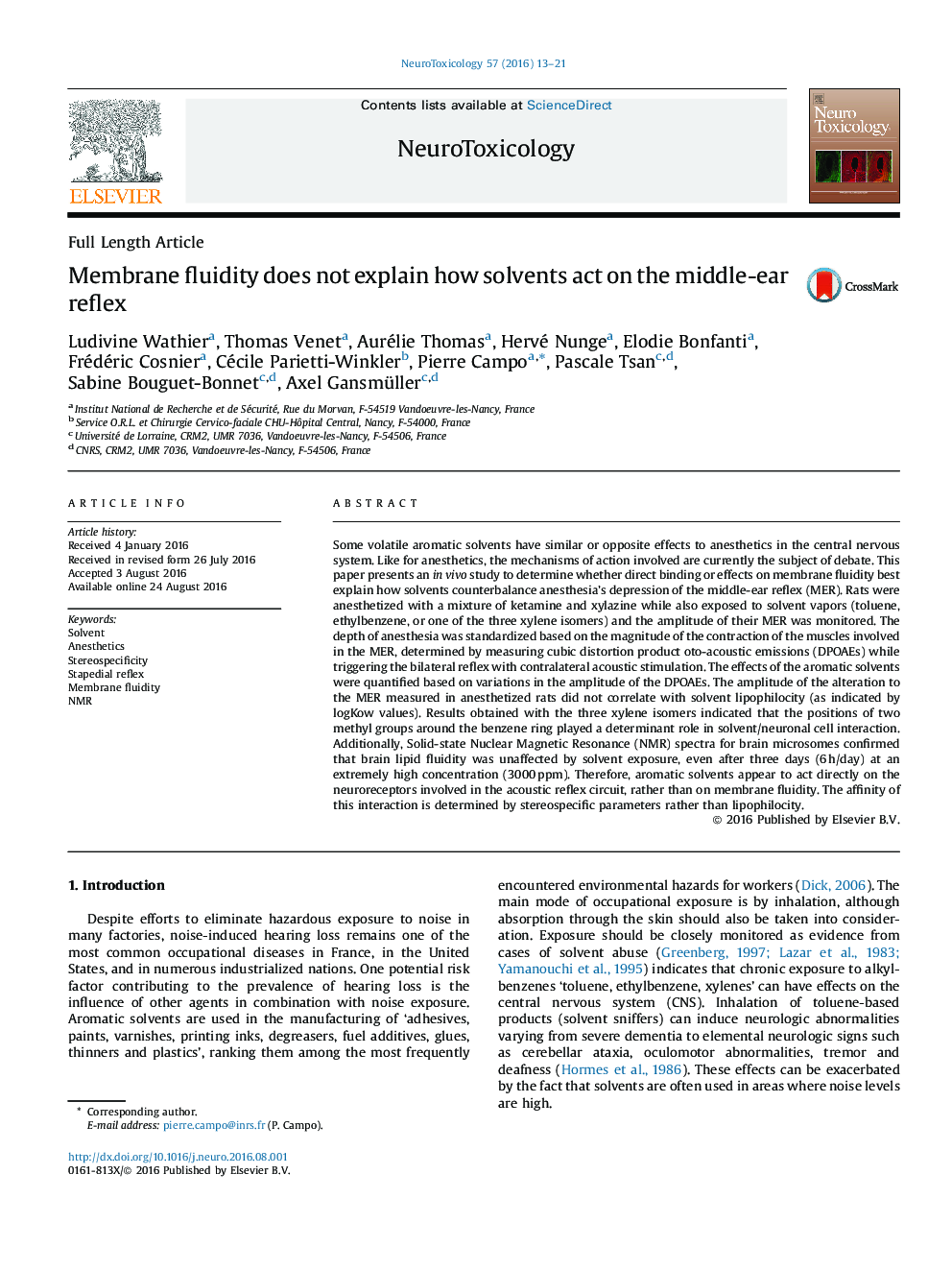| کد مقاله | کد نشریه | سال انتشار | مقاله انگلیسی | نسخه تمام متن |
|---|---|---|---|---|
| 2589398 | 1562037 | 2016 | 9 صفحه PDF | دانلود رایگان |
• Depth of anesthesia can be standardized by the magnitude of the middle ear reflex.
• Amplitude of the alteration to the MER did not correlate with solvent lipophilocity.
• Solid-state NMR spectra confirms that brain lipid fluidity is unaffected by solvent.
• The 3 xylenes have different effects on the magnitude of the middle ear reflex.
• Solvents appear to act on the neuroreceptors rather than on membrane fluidity.
Some volatile aromatic solvents have similar or opposite effects to anesthetics in the central nervous system. Like for anesthetics, the mechanisms of action involved are currently the subject of debate. This paper presents an in vivo study to determine whether direct binding or effects on membrane fluidity best explain how solvents counterbalance anesthesia’s depression of the middle-ear reflex (MER). Rats were anesthetized with a mixture of ketamine and xylazine while also exposed to solvent vapors (toluene, ethylbenzene, or one of the three xylene isomers) and the amplitude of their MER was monitored. The depth of anesthesia was standardized based on the magnitude of the contraction of the muscles involved in the MER, determined by measuring cubic distortion product oto-acoustic emissions (DPOAEs) while triggering the bilateral reflex with contralateral acoustic stimulation. The effects of the aromatic solvents were quantified based on variations in the amplitude of the DPOAEs. The amplitude of the alteration to the MER measured in anesthetized rats did not correlate with solvent lipophilocity (as indicated by logKow values). Results obtained with the three xylene isomers indicated that the positions of two methyl groups around the benzene ring played a determinant role in solvent/neuronal cell interaction. Additionally, Solid-state Nuclear Magnetic Resonance (NMR) spectra for brain microsomes confirmed that brain lipid fluidity was unaffected by solvent exposure, even after three days (6 h/day) at an extremely high concentration (3000 ppm). Therefore, aromatic solvents appear to act directly on the neuroreceptors involved in the acoustic reflex circuit, rather than on membrane fluidity. The affinity of this interaction is determined by stereospecific parameters rather than lipophilocity.
Journal: NeuroToxicology - Volume 57, December 2016, Pages 13–21
